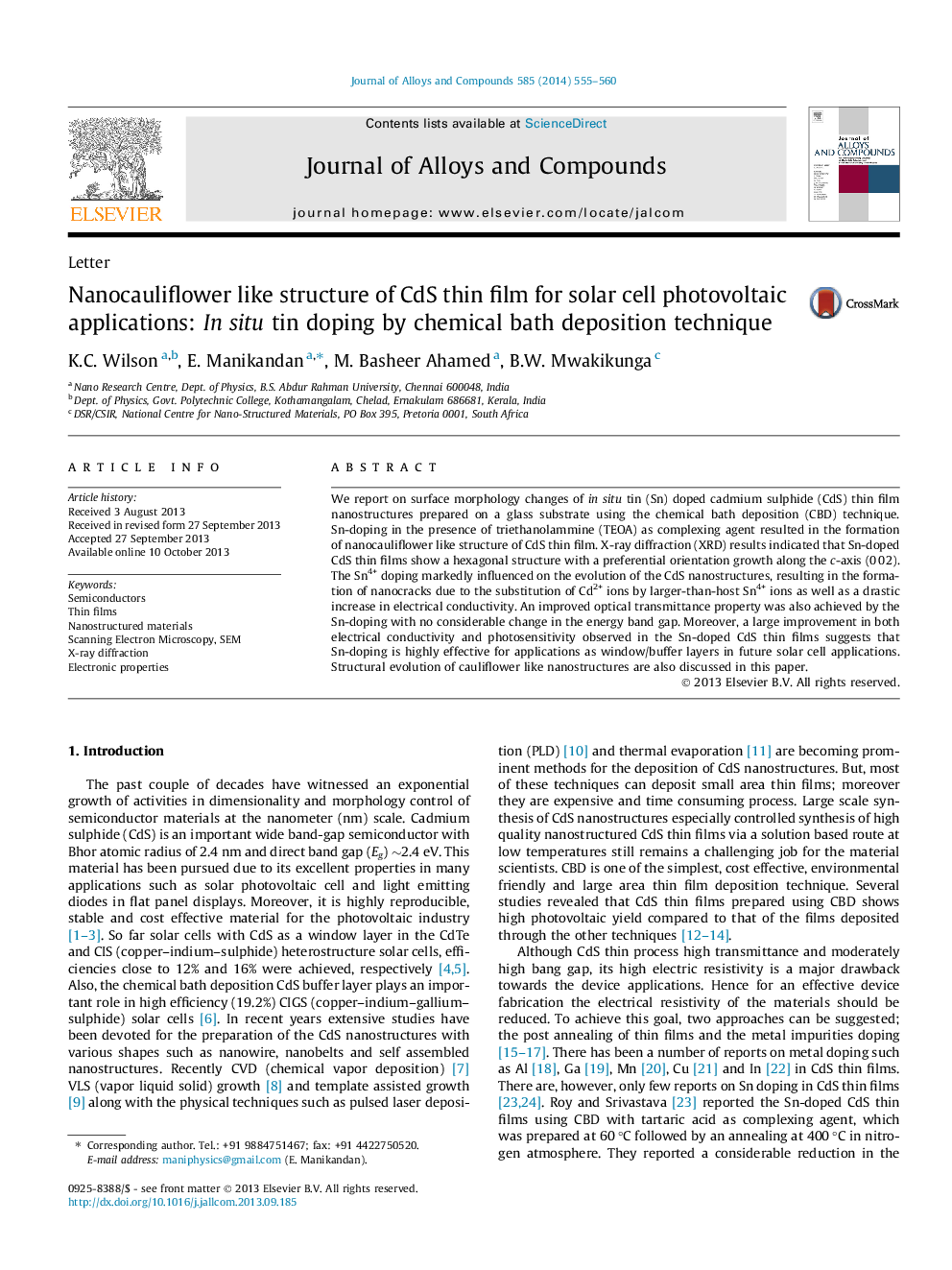| Article ID | Journal | Published Year | Pages | File Type |
|---|---|---|---|---|
| 1613019 | Journal of Alloys and Compounds | 2014 | 6 Pages |
Abstract
We report on surface morphology changes of in situ tin (Sn) doped cadmium sulphide (CdS) thin film nanostructures prepared on a glass substrate using the chemical bath deposition (CBD) technique. Sn-doping in the presence of triethanolammine (TEOA) as complexing agent resulted in the formation of nanocauliflower like structure of CdS thin film. X-ray diffraction (XRD) results indicated that Sn-doped CdS thin films show a hexagonal structure with a preferential orientation growth along the c-axis (0Â 0Â 2). The Sn4+ doping markedly influenced on the evolution of the CdS nanostructures, resulting in the formation of nanocracks due to the substitution of Cd2+ ions by larger-than-host Sn4+ ions as well as a drastic increase in electrical conductivity. An improved optical transmittance property was also achieved by the Sn-doping with no considerable change in the energy band gap. Moreover, a large improvement in both electrical conductivity and photosensitivity observed in the Sn-doped CdS thin films suggests that Sn-doping is highly effective for applications as window/buffer layers in future solar cell applications. Structural evolution of cauliflower like nanostructures are also discussed in this paper.
Keywords
Related Topics
Physical Sciences and Engineering
Materials Science
Metals and Alloys
Authors
K.C. Wilson, E. Manikandan, M. Basheer Ahamed, B.W. Mwakikunga,
